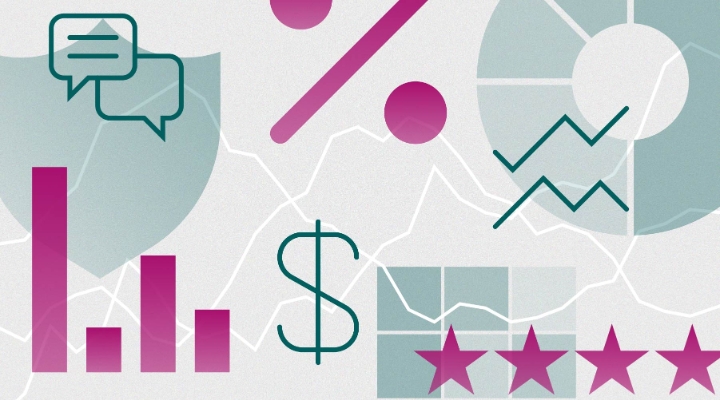
The sharp falls seen on global stock markets this week will doubtless have caused many investors to feel uneasy.
When the value of your investments is falling, it’s hard to imagine them ever bouncing back. And while experts say the worst thing you can do is sell after a stock market has plunged – this only means you crystallise your losses – it’s easier said than done.
But Morningstar analysis of how UK equity funds fared after the financial crisis of 2007/8 could provide some comfort.
Active Managers Can Bounce Back
We’ve looked at how far Morningstar Rated Funds fell at the worst – and how long it took them to recover. To do this we look at a measure called “Maximum Drawdown”, which indicates the biggest trough in a fund’s performance over a particular period, in this case from January 1, 2001 until February 29, 2020.
The Maximum Drawdown date for the FTSE All Share during this time was in November 2007, by which point it had fallen a toe-curling 41.09%. According to Morningstar Direct data, just six Morningstar Rated UK equity funds had a maximum drawdown which is less than 41.09%. Five of those came in the summer of 2007, as the financial crisis was starting to take hold.
The Investec UK Alpha fund had fallen 40.45% by the time it reached its nadir, and the L&G UK Index Trust 40.22% (though this came after the dotcom bubble burst in 2001). The M&G Recovery fund managed to turn in the best performance among the funds we analysed –down 36.85%.
What is crucial for investors to note, however, is how long it took these funds to recover. The Recovery Period shows how many months it took to recoup their losses and climb from trough to peak. And while it took the FTSE All Share 24 months to recover the losses of the financial crisis, some active fund managers were able to turn things around far more quickly.The Schroder Income and M&G Recovery funds took just 13 months to recoup their losses. These funds follow a value style of investing, backing out-of-favour companies the manager believes are due for a turnaround; the downturn such as that seen in 2008 is a prime time for these funds to shine. Fidelity Special Situations is of the same ilk and took 14 months to recover.
Investors can also take comfort from the long-term performance these funds have managed to achieve, despite such a major setback. Investec UK Alpha, for example, has delivered annualised returns of 7.22% over 15 years and Fidelity Special Situations 6.7%. Three of the funds in the list have produced stronger returns than the index over 15 years.
From Trough to Peak
Many UK equity funds suffered even greater losses than the stock market during the financial crisis, which is par for the course for an actively managed fund. According to Morningstar data, Artemis UK Smaller Companies saw the greatest maximum drawdown, falling 57.76% from its peak by July 2007. ASI UK Ethical Equity fell 50.71% and Aberforth UK Small Companies 50.85%.
It is perhaps not surprising that these funds took longer to recover than the market too; the Artemis fund took 47 months to get back to its peak, for example.
But others fared much better. While the Schroder Recovery fund fell more than the market – down 41.64% at its maximum drawdown points – it took just seven months to recoup its losses. It has also delivered annualised returns of 6.64% over 15 years, outperforming the index over the period. ASI UK Smaller Companies also took less time to recover than the market, at 20 months, and has delivered hefty annualised returns of 13.86% over 15 years. Interestingly, despite enduring greater maximum drawdowns, six of the nine funds in this list have delivered stronger annualised returns than the index.




























